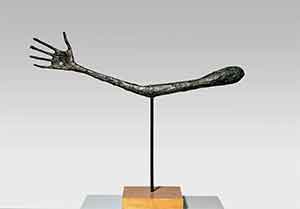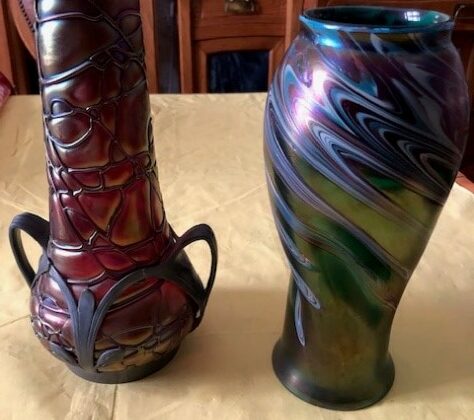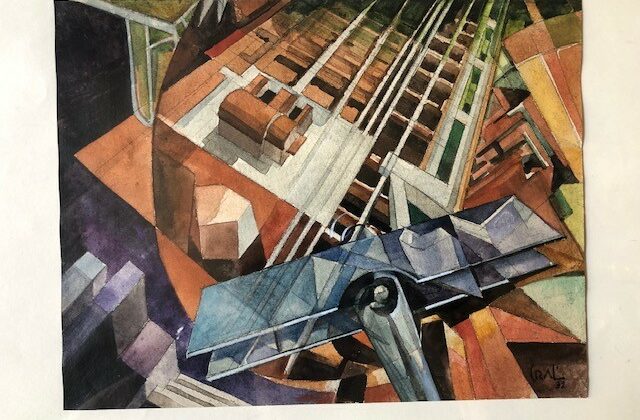Giacometti La Scultura

Figures stripped to bones, just signs, symbol of solitude, discomfort, incommunicability
Rome, Galleria Borghese
5th February – 25th May 2014
By Francesco Carelli
Professor Family Medicine, Milan and Rome
The Galleria Borghese, a shrine of priceless antique masterpieces, hosts for the very first time the tragic of modern sculpture embodied in the work of one of the greatest 20th century artists: Alberto Giacometti.
The exhibition is an opportunity to explore the artist – a visionary, oneiric, surrealist figure that left an unforgettable mark in art – and above all to show his art “conversing” with the masterpieces on display in the Galleria
: the white, curvy shape of Femme couchée qui rêve (1929) in which Canova’s Paolina (1805/1808) can be glimpsed, whose face is mirrored by the Tête qui regarde (1928) on the other side; the heavy step of the Homme qui marche (1947), echoing Aeneas’ weary step under Anchises’ weight (1619); the Femme qui marche (1932/1936), as dark and mysterious as the basalt sphinxes in the Egyptian hall; the unstable balance of the Homme qui chavire (1950), off-axis and on the verge of losing its balance like Bernini’s David (1623/1624).
In the Galleria setting, the 40 exhibited works – bronzes, plaster works and drawings – release the burning energy of Giacometti’s art, which investigates the lively depth of his subjects by carving their soul until the human figure is “stripped to the bone”.
In sculpture, he developed a highly expressive form of modeling continually whittling away forms in plaster or clay and building them up again to arrive at the fragile essence of the model that he thought to capture. His isolated , attenuated figures have a funerary resonance. The sense of alienation that they project made Giacometti the favored artist of the French existentialist writers led by Jean Paul Sartre in the 1950s.
We can see sculpture with fragile, totally skeletal individuals, walking in between from a surrealist studio or a starvation camp. He wrote: “ I met a person and I went home, I managed to create him, I felt him as me, as myself, as my believes and I felt myself in that moment in a mirror”.
These isolated, attenuated, introspective, spectral and ghostly figures with funerary resonance make the Giacometti’s sense of alienation and a reflection for some patients we can meet during our General Practice.
His figures are so corrode to arrive to the essence, to a step before annihilation, removing the individual traits. His figures seem as metaphoric of the human condition, symbol of existentialism’s problems linked with themes like discomfort, solitude, incommunicability.
Surrounded by the visual celebration of Galleria Borghese, Giacometti’s representation of mankind highlights the man and his fatal failure that becomes the tragic achievement of modernity.
As opposed to the past, here the greatness of man along the centuries is glorified and the exhibition explores the boundless complexity of the human being – also through the metamorphosis undergone by the Galleria.
Canova Hall – Plastic perception
The Canova Hall displays Reclining Woman who Dreams (1929), Man (Apollo) (1929), Reclining Woman, (1929); these works, when compared to the organic fullness, the tense muscles and the purity of contours in Canova’s work Paolina Borghese , highlight Giacometti’s inclination to lightness and concave, hollow shapes – a rather unusual thing for a sculptor.
David Hall – The sight
In David Hall, Bernini uses his art to “instruct” us on how to perceive the intensity of Giacometti’s sculptures: David’s static energy contrasts with the swinging movement of the Swaying Man.
What the modern artist perceives as something temporary because it is perpetually moving, for Bernini it can hold its position for a single instant. The rotating movement applied to a highly dramatic situation is radically transformed by the Swiss sculptor and shown as a universal condition of the human being. The surface of the object, full of marks to make the viewer’s eye move along it, testifies to Giacometti phenomenological research in his attempt to make the viewer perceive the sight process.
Apollo and Daphne Hall – Movement in stillness
Evoking movement as a physical and psychic emotion in sculptures that stand still and motionless: this is Bernini’s fundamental aspiration, whose best work in this sense is Apollo and Daphne.
Giacometti is aware of this contradiction from an early age: in his 1921 great self-portrait after coming back from Italy, he is still under the influence of tympana in classical temples and he represents himself in the running gait (with one knee bent and the other raised) of Medusa, whose gaze freezes whoever dares look at her.
He changes perspective by resorting to perception: it is the ceaseless eye movements that are supposed to make the original creation alive by imagining the shapes.
His first work along the same lines is Standing Woman of 1948, sculpted in the aftermath of the Second World War when the Femmes debouts increase in number.
Similarly to Daphne turning into a tree, in Giacometti’s women the metamorphosis is also linked to a universal presence: the tall and slim forms are anchored to the ground through huge feet, resembling roots, and surfaces are as chapped as tree barks. The small heads are prospectively thoughtful; an uninterrupted flow pushes upwards the whole shape.
Emperors Hall – A sculpture as fragment
The fact that representations of body parts can be considered fully accomplished works of art dates back to the discovery of some ancient sculptures among Rome’s ruins: more specifically, a bust that, as per Michelangelo’s instructions, was never completed but left in the Belvedere court in Vatican, where it became the favourite subject matter of research for sculptors in bud.
Later on, from Rodin onwards, the expressive representation of the bust represents a peculiar challenge, so much so that Giacometti also exhibits a bust for the first time at the Salon des Indépendants in 1925, his first “abstract” sculpture, so to speak. Shortly afterwards he creates another composition reminiscent of cubism and clearly inspired by the fragment of a Sumerian sculpture with two clasped hands. Along these lines, in 1932 Giacometti executes Main prise – a wooden hand stuck in a gearwheel – whereas his work The Hand displayed in Rome dates back to 1947, when the artist resumes this topic with a sharper expressive drama following his return to figurative art and the experience of the war.
As he later stated, the hand’s splayed fingers reminded the artist of an arm detached from the body he saw in 1940 when he was fleeing from Paris.
The Roman busts too were inspired by the cult of the dead: the myth of Pluto’s abduction of Proserpina, the goddess of fertility, represented by Bernini in the dramatic group of sculptures, lies at the core of the Mysteries of Eleusis, in which the initiate can experience the overcoming of death..
Hermaphrodite Hall – Spoon Woman and Woman with Her Throat Cut
Female figures seem to always feature in the work of Giacometti, who in his first grande femme creates a different and unique female shape, the Spoon Woman. In his first “grande femme”, followed by others marking one of the peaks of his career, the artist combines the two different sources of inspiration of his first period, the avant-garde: the formal rigour of Cubism combined with the hieratic symmetry and bold expressive representation of African sculpture.
In this work the shape of the “spoon” is used to effectively conjure the idea of a woman whose only presence is her trace left in the title. It is precisely the title that stirs a sense of initial bewilderment triggered by the contrast with the represented object; the lack of human traits turns the tortured human being in an instrument of torture. The concave lap reminds of a primitive goddess of fertility with its forward and backward movements, opening and closing in front of the viewer. The pure forms of life, breasts and head, break out upwards, floating like an apparition. The elusive concave emptiness and the dominating oval pattern pushing in opposite directions seem to portray a nearly erotic frustration, similar to the effect evoked by Hermaphrodite.
Aeneas and Anchises Hall – The iconic condensation. The Walking Man
The Walking Man was originally a sketch for a monument commemorating the Communist Member of Parliament Gabriel Péri, but it has become Alberto Giacometti’s most famous sculpture, whose intent was to make the dead man’s soul come back and enjoy the daylight. The man’s hesitation in making the first step transforms this hieroglyphical figure, dating back to the origin of civilisation, into something subjective and precarious.
Through his elusive and nearly gravityless creations Giacometti tells us of the ancient tradition of representing the human being: the anxious gait of the figure, its fragility and the humble matter it is made of resembles the condition itself of the human being. His transience, made of dignity and weakness, is the “unrelenting” reality draining the human being, because it never concedes a final and total cancellation.
As a matter of fact, his suspended figures always maintain a lowest common denominator making them still recognizable as human features. They no longer represent anything physical and in other words they are therefore reduced to “signs”.




